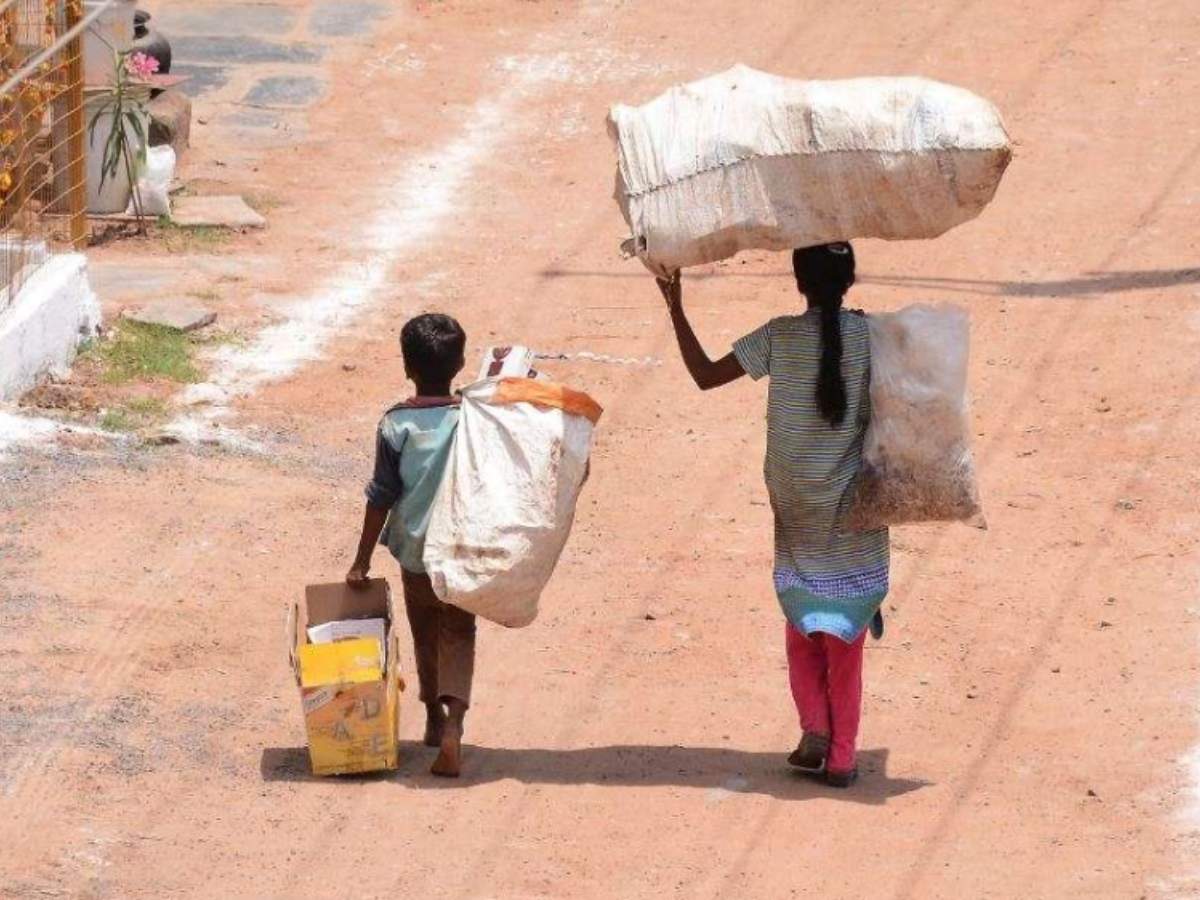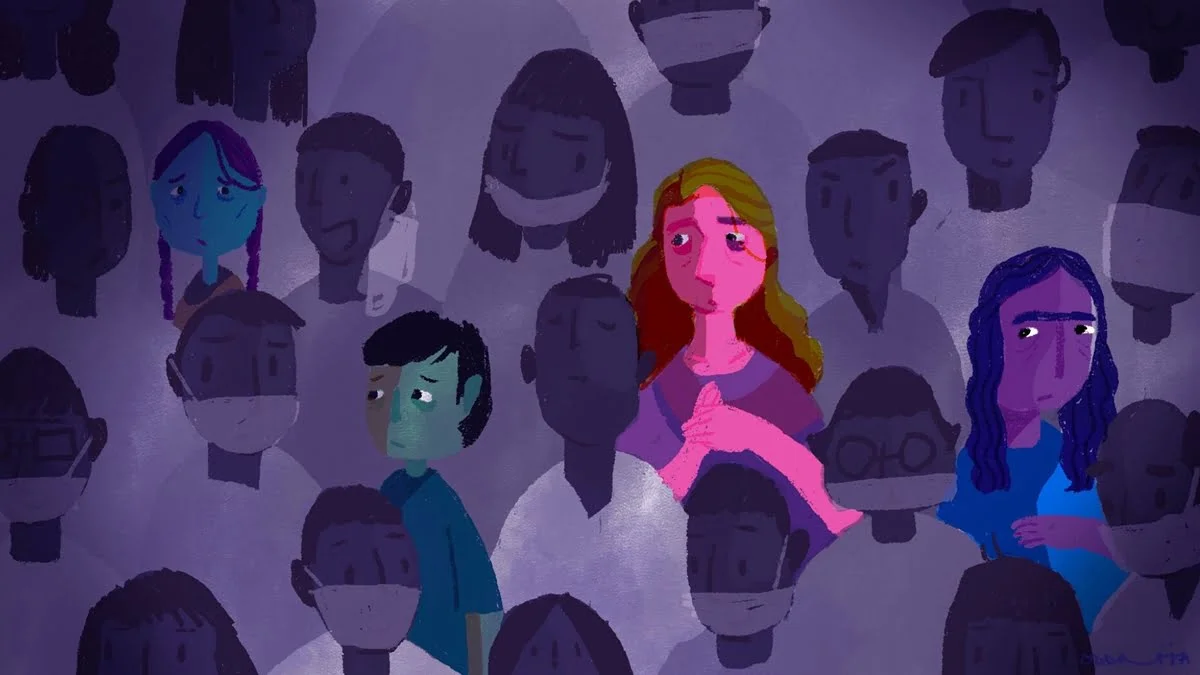The Covid-19 pandemic has wrought an economic downturn and has pushed the Indian labour force which was already working in an informal and precarious setup, towards destitution. Over, 55 percent of people globally, about 4 billion – do not have any social protection and many others who were employed in the formal sector have been pushed out. With contraction in working capital, increased economic insecurity and disrupted supply chains, the demand for workers is reducing and they are forced to work on lower wages.
In this context, when adults are not able to find work and are running out of options for sustenance they must send their children to work as a survival strategy. Children who are left behind after the demise of their parents due to covid or are abandoned are even less protected and more vulnerable to the worst forms of labour. Also, because schools are interrupted & online learning is not affordable for all, the right to education has become more limited for children living in precarious socio-economic environments.
The intersections of class, gender and geography further deepens this divide. Gender norms and societal expecations mean that girls face greater disadvantages as they are denied the right to education or may suffer the triple burdern of housework, schoolwork & outside paid work.
Also read: In Conversation With Shantha Sinha: The Anti-Child Labour Activist
In this article, we look at how the pandemic has delayed a generation of progress against child labour and the necessity of examining the issue through a gender lens. It further argues for the urgent participation of different stakeholders and effective feminist interventions to protect children from exploitation.
The pandemic & the child labour
As per a report by the International Labour Organisation (ILO) an estimated 42-66 million children could fall into extreme poverty as a result of the crisis this year, adding to the estimated 386 million children already in extreme poverty in 2019. In India alone the CHILDLINE 1098 helpline received 3.07 lakh calls between March 20-31, 2020 out of which 8% were related to child labour. Yes, over 24,000 cases of child labour were reported just in ten days.
Owning to the pandemic, the root causes of child labour and forced labour – including poverty, limited access to decent work opportunities for those of legal working age, social marginalization, discrimination, the lack of universal quality education, the prevalence of the informal economy and weak social dialogue – are likely to be exacerbated.
Children are often the most available labour in households. When households need more financial support, they turn to children.
For instance, parental unemployment due to economic shocks in Brazil has led children to step in to provide temporary support. Similar effects have been documented in Guatemala, India, Mexico and the United Republic of Tanzania. Another way financial relief for underprievliged families is to cut school fees. This was an important part of how households coped with the Great Recession in El Salvador, with families shifting attendance from private to public schools within a school year to reduce expenditures on schooling.
Further, the evidence about child labour rising as schools close during the global shutdown is gradually mounting. In Malawi, for instance, the Government closed schools to prevent the spread of the virus. Unable to learn, children soon ended up with other tasks. As one child says, “Many parents in my neighbourhood have taken advantage of the ‘holiday’ to send children to town to sell fruits and vegetables.”
Also read: How Are Children One Of The Most Vulnerable Victims Of The COVID-19 Crisis
A study in Côte d’Ivoire on the drop in cocoa prices in the 1990 economic crisis found that a 10 percent fall in income led to a more than 3 percentage point decline in school enrolment, and a more than 5 percentage point increase in child labour.
Fighting against child labour becomes a universal challenge for countrices across the globe in the post-pandemic labour market.
However, the predicament here is to understand how it affectes other genders. For curating an inclusive response we need to consider the differences in their situations before taking protective action.
Why do we need to assess child labour through a gender lens?
The ILO also reported in a brief, titled ‘Covid19 and Child Labour: A time of crisis, a time to act’, that the pandemic is leading to the first rise in child labor following 20 straight years of progress. The ILO said that child labor had decreased, globally, by 94 million since 2000 — a remarkable gain that is now at risk of being undone.
Also, children already engaged in child labor may resort to working longer hours, or be forced to take up more exploitative and hazardous jobs under worsening conditions of work, the brief opined. And, of course, it predicted that gender inequalities will now be aggravated with young girls being pushed into exploitation in agriculture and domestic work. Effective feminist interventions into legal frameworks are necessary to reclaim these spaces.
We can attempt to understand the gender-related reasons behind the employment of children, and plan for prevention of children being used for labour as well as how to reintegrate children back into school. For example, existing rehabilitation facilities for working street children may not be suitable for mixed sex groups.
Thus a “gender lens” is helpful to understand – and hence to prevent and solve – child labour problems. The challenge is to demonstrate that action against child labour and the promotion of gender equality do not mean a trade-off with other development gains, but provide long-lasting benefits to families, communities and societies.
Although the existence of child domestic workers has been widely acknowledged and, in fact, categorized as belonging to the informal sector of labour, still children (especially girls) in this work have remained fairly invisible in employment statistics.
Also read: COVID-19: Why Is Social-Emotional Learning Important For Children
Such invisibility may be attributed to the fact that the nature of their job is not valued essentially as a “service” that deserves to be compensated, but rather it is viewed as an extension of their duties as children, even though they are also actually hired to do domestic work or work full time in the household on domestic chores. However, domestic work is not regarded as “real” or “serious” work.
Consequently significant gender gaps exist in the recorded incidence of child labour. In particular statistical data do not take account of working girls in domestic labour. This is further complicated by the fact that very often girls are sent to relatives in nearby towns to “help” with household chores in exchange for their board and keep, and perhaps the opportunity to attend school or “to gain experience”. Such children are not viewed as workers as such.
There is no denying the fact that both girls and boys engage in the worst forms of child labour. However, it is important to realize that due to certain societal expectations, duties and responsibilities placed on girls, they are often more vulnerable to exploitation.
The female children are stained by neglects, discrimination, lack of opportunities and limited life options. Gender discrimination often results in disparity in girls’ enrolment, high dropout rate and their early involvement in economic activities. The female child helps the family to survive by spending her time and in this process she misses out education, good nutrition and future employment avenues that may be remunerative.
The predominance of female labourers is reflected in the findings of various studies conducted in the garment industry in India, match, fireworks and beedi industries in Tamilnadu or in the bangle industry in Ferozabad. The findings showed that fifty to eighty percent of them lost their childhood, struggling between her work place and domestic chores at home. Female children are exploited unmercifully in many industries. Sometimes sexual abuse is also inflicted upon them. The crux of the problem of the female child is that she is caught in a situation, in which she cannot change, which is predetermined, precast and pre-destined. Society has already defined her role, which is based on a male view. The societal preference for male children result in girls being valued less, fed less, educated less but worked harder and deprived of every opportunity to broaden their personal, social and intellectual horizons. In certain communities, the rules of permission and restriction on women and female children are much more stringent which allows for greater exploitation and discrimination.
Parental perception also contributes to the underrating of the labour of the female child. Such attitudes explain why boys are often given greater opportunities to learn economically valuable skills than girls.
Statistics on girl child labour
Bihar has the third-largest number of child labourers in the country. Although there have been numerous legislations and schemes to address the issue, they could not provide a lasting solution. The need of the hour is to look at the inextricable link between caste and the children who form the workforce, and to devise solutions accordingly.
- Data the missing link
- Accessibility of schools (online)
- Menstrual health awareness
- Role of private players & other stakeholders
- Refining domestic work
- Report
- Access to internet as a fundamental right
Child labour does not only lead to lost childhoods. Since most of these children work in difficult, often exploitative, environments, their overall health and nutrition also suffers, leaving them vulnerable to various illnesses. Perhaps the first step in curbing the rise of child labour is to acknowledge that it is a problem. We need to accept that no pandemic, no economic crisis, and no extraordinary circumstances can ever justify children being exploited. Only then can sustainable change happen. Amidst these ‘visible’ problems, there are other issues that have remained ‘invisible’. One such issue is the effect of the pandemic on children, specifically, an increased risk of child labour.
Featured Image Source: TOI
About the author(s)
Vanita is a lawyer by training and writes stories at the intersection of business & public policy, law, regulations and building inclusive workplaces. She is a Staff Writer for The Ken.




